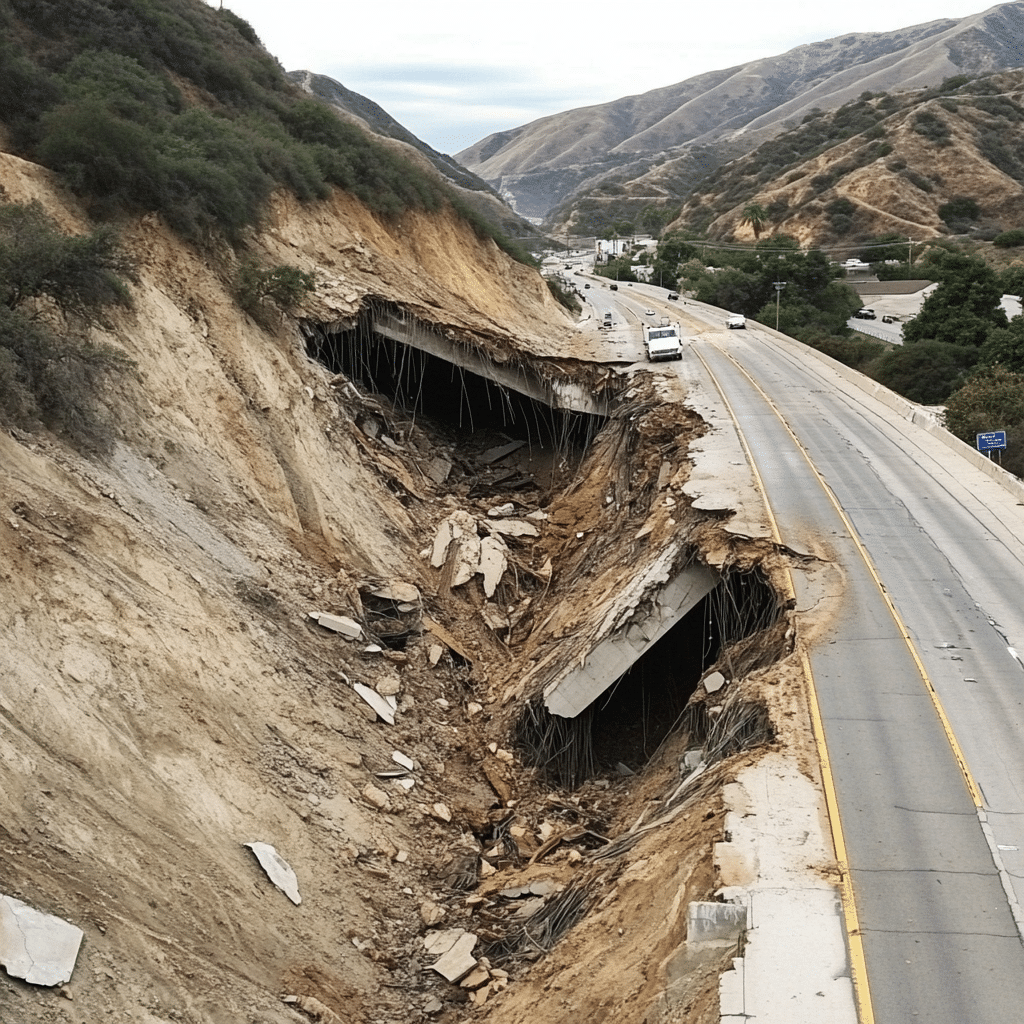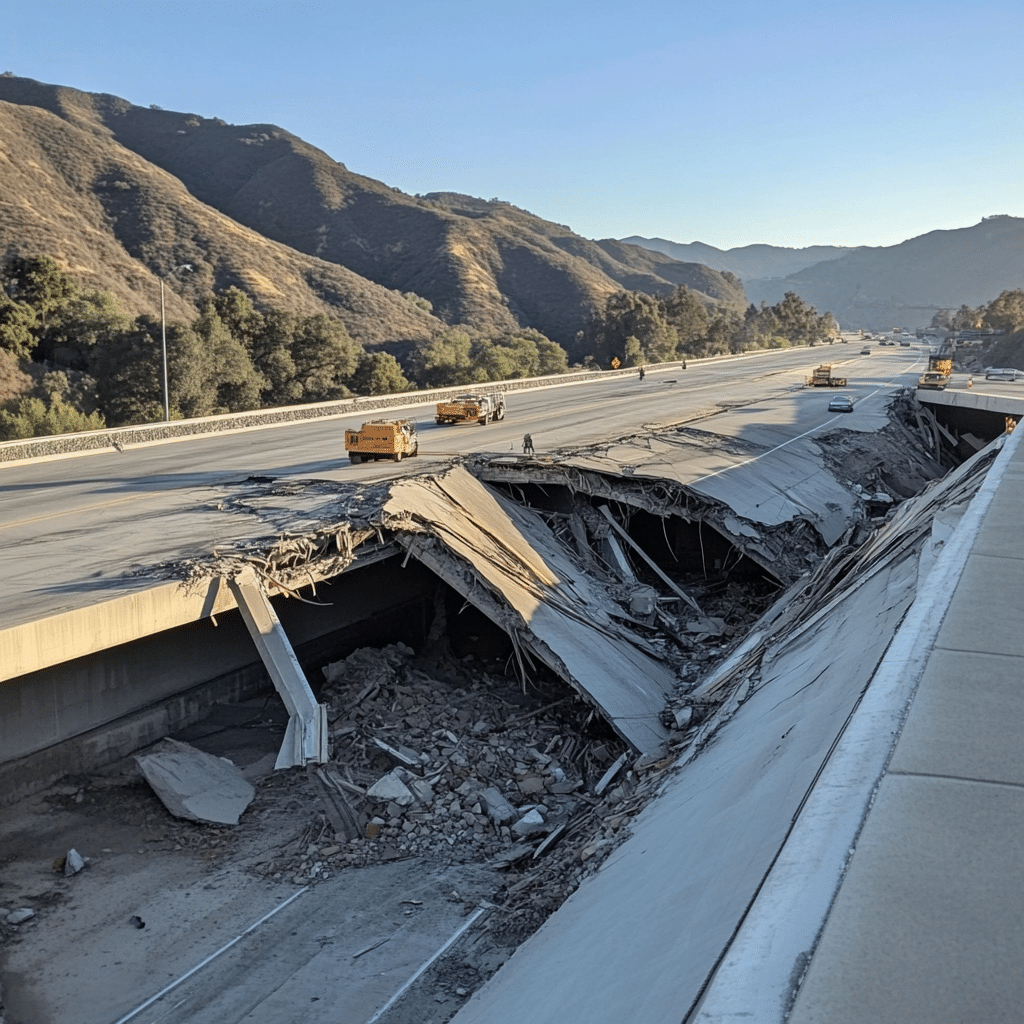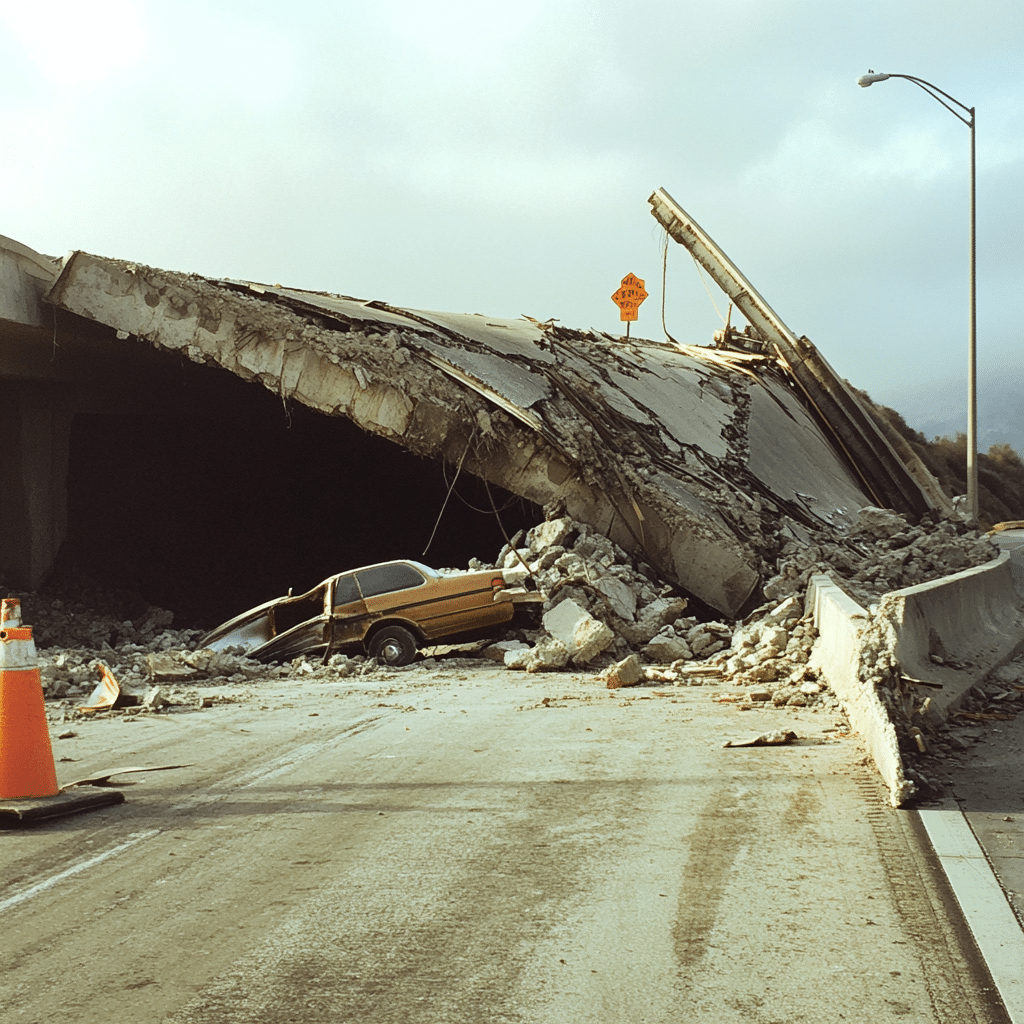The recent California highway collapses have sent shockwaves throughout the state and captured national attention. As highways buckle and crumble under the pressure of increasing demands, the urgent call for infrastructure reassessment has never been louder. Many Californians are left wondering how safe their daily commutes really are. With every collapse, the question becomes more pressing: Are We doing enough to protect our roadways? This article delves into the root causes and implications of these unfortunate events, emphasizing the need for immediate reforms.

7 Key Factors Behind California Highway Collapses
1. Aging Infrastructure
California’s roadways have been around for decades, and they’ve seen better days. The American Society of Civil Engineers rates the state’s infrastructure poorly, reflecting years of neglect and underfunding. Many highways were constructed with materials and designs that, while state-of-the-art when built, can no longer withstand modern demands. Highway sections that once operated smoothly now show evident signs of wear, leaving many drivers to navigate increasingly dangerous stretches of road.
2. Climate Change and Extreme Weather
The impact of climate change is irrefutable, manifesting through unpredictable and severe weather. In early 2024 alone, California faced heavy rains and swiftly melting snow from the Sierra Nevada. The combination of these two events exposed flaws in existing road structures and drainage systems, leading to collapses. The escalating frequency of such extreme weather conditions necessitates all levels of government to rethink their approach to infrastructure design completely.
3. Lake Effect Snow Complications
While lake effect snow may not be common throughout the entirety of California, certain areas, particularly near Lake Tahoe, experience this unique weather phenomenon. The heavy precipitation and rapid snowmelt can saturate the ground, making roads unstable and leading to sudden integrity failures. These environmental elements are not something that can be ignored. Engineers must acknowledge regional weather quirks in their designs to prevent expensive and dangerous collapses down the line.
4. Increased Traffic Load
As California’s population inches up, so does the traffic congestion on its highways. Roads initially built for smaller cars and fewer vehicles are now under immense pressure from an ever-growing number of heavy trucks, electric vehicles, and commuters. This increased weight and volume exacerbate any existing structural weaknesses, leading to a greater likelihood of collapse. The strain on infrastructure isn’t just a minor inconvenience; it can have catastrophic results.
5. Geological Factors
California’s diverse landscape brings its own set of challenges. The state’s geological makeup can contribute to landslides, erosion, and eventual roadway failures. This year has seen several highways collapse near unstable slopes, indicating a dire need for comprehensive geological assessments. Understanding the terrain and implementing appropriate engineering solutions is crucial to safeguarding these routes.
6. Shock Events and Toll Road Impacts
Unpredictable events, like earthquakes and heavy flooding, can devastate infrastructure almost instantly. Areas near seismic fault lines, such as the famous San Andreas Fault, face unique risks. Experts are now advising that delays in proper retrofitting could spark catastrophic outcomes, with toll roads bearing significant impacts. The consequences stretch beyond immediate dangers, raising questions about long-term safety and the financial implications for drivers.
7. Lack of Emergency Preparedness
In many cases, response systems falter when disaster strikes. Many regions lack robust emergency plans to address infrastructure failures quickly. This inadequacy puts communities at risk, leaving many without essential services for longer than necessary. Prompt investment in emergency preparedness can reduce the severity of disruptions caused by highway collapses.

The Societal Impact of Highway Collapses
The consequences of California highway collapses are far-reaching, extending well beyond the broken pavement. For cities like Santa Cruz, a collapse can obstruct crucial commuter routes, resulting in business downturns. Local shops and restaurants suffer when access is limited, which can lead to layoffs and economic decline. Additionally, emergency responders face complications in reaching those in need, whether it’s for medical emergencies or fire suppression. These are not just roadways; they are lifelines for communities.
Innovative Solutions on the Horizon
Promising solutions are emerging to combat the challenges posed by aging infrastructure. Self-healing asphalt, designed to mend cracks naturally, is one such innovation gaining popularity among engineers. Enhanced drainage systems that can handle excessive rainfall are another potential avenue for improvement. On a larger scale, policymakers are actively pursuing federal grants that could be instrumental in funding infrastructure upgrades, focusing on the most vulnerable areas. The road ahead is fraught with challenges; however, it also offers a beacon of hope.
Reflections on the Future of California’s Roads
As California faces the fallout from its highway collapses, it stands at a crossroads ripe for change. Increased awareness among citizens and decision-makers could make a tangible difference in future road safety. Innovative strategies, such as embracing new materials and construction techniques, present an opportunity for real progress. Overall, addressing climate challenges and population growth through sustainable infrastructure investments isn’t just a good idea; it’s crucial for safeguarding future generations. As we navigate these modern challenges, let’s unite as a state and prioritize the integrity of our highways, ensuring reliable transport routes for everyone who calls California home.
California Highway Collapses: Fun Trivia and Interesting Facts
California highway collapses have brought the urgent need for safety measures into sharp focus. While you might think of highways simply as routes to beach parties or music festivals like Frank Ocean at Coachella, the implications of road integrity stretch far beyond. Did you know that California consistently ranks high for earthquake preparedness? With geologists anticipating movements, residents often find themselves wondering how resilient infrastructure truly is. Understanding the geology can be as vital as knowing the Weather in Evansville, Indiana, where sudden thunderstorms can also create hazards on the road.
Let’s switch gears a bit. Have you ever wondered why tsunami Movies captivate us so much? Well, there’s something about the thrill of nature’s fury that gets the adrenaline pumping. Just as creative storytellers use dramatic scenarios to evoke feelings, engineers aim to evoke feelings of safety through innovative road designs. Yet, despite advances in technology, the stark reality of environmental challenges means highway collapses can still occur. These incidents remind us of the need to cope with our surroundings— a term you might want to check out if you’re intrigued by understanding how people adapt in times of crisis.
Moreover, if you think navigating California’s winding highways is tough, consider Carson City, NV, where weather changes swiftly. This is a prime example of how transportation systems face diverse challenges, including sudden weather changes that can affect road safety—think of it as the local Blazers schedule, full of surprises and unexpected turns! Now, let’s not forget about the role of aging infrastructure and maintenance; it’s like keeping up with health reports, such as Kris Kristofferson’s health updates, a reminder of how we often overlook the wear and tear until it’s too late.
In retrospect, California highway collapses don’t only serve as wake-up calls for engineers and policymakers but also challenge us collectively to stay informed and proactive. Whether it’s connecting with resources like Kylie Shays lifestyle tips for sustainable living or tracking how to better prepare for emergencies, this is all part of enhancing our community resilience. Looking ahead, perhaps there’s hope that measurements taken today will keep us driving safely tomorrow, and who knows, we might even have better stories to tell along the way!




